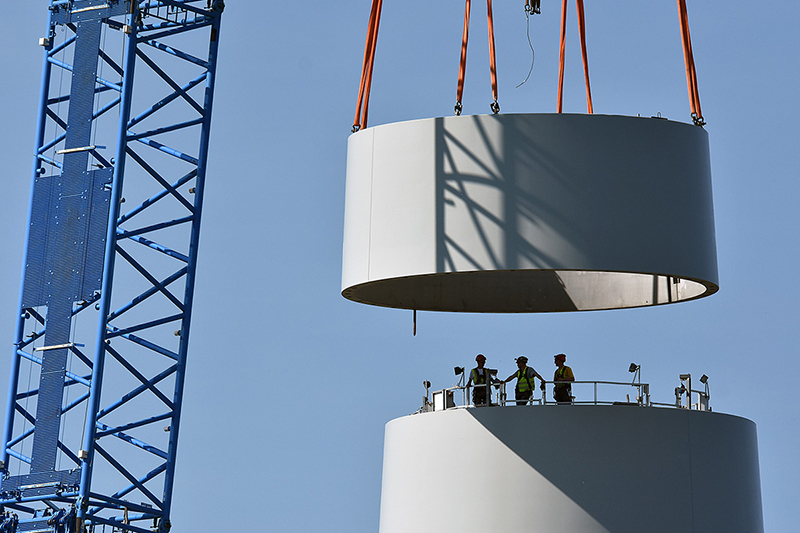The world is developing at an exponential rate and so does the need for more renewable energy. Meeting this ever-growing need for energy while ensuring sustainability is a challenging task. It requires a great deal of innovation in the way many industries function.
Steel is critical for supplying the world with the required renewable energy. Whatever the source is, be it based on nuclear technology, wind, solar, geothermal or even fossil fuels, steel has a crucial role in the production and distribution of energy to different industries.
- Solar Energy:
In thermo-solar energy plants, stainless steel are used for both the inner and outer shells of water tanks, pumps, cushion absorbers, frames and fasteners. They are made into complex shapes in order to maximise heat transfer. To ensure that the absorption of sunlight is maximised, coatings are also applied. - Biomass Energy:
In production of biogas, corrosive compounds are produced as a by-product. To avoid damage to the equipment, stainless steel is used in these plants for pumps, pipes, valves, fittings and digester tanks. In addition to corrosion resistance, the use of stainless steel for digester tank also has other advantages. Digester tank can be completed within a week, and there is residual value once its lifetime of use in the plant is over. - Hydroelectric Energy:
To provide maintenance-free and long-lasting solutions, stainless steel is widely used in production of hydroelectricity. Using steel protects the system from seawater corrosion, abrasion, and bio-fouling. - Offshore Wind energy:
The corrosive nature of seawater in which offshore wind mills are located demands the use of a corrosion resistant material. Stainless steel is therefore used in applications such as fasteners, safety cables, davit cranes, and fittings. Stainless steel ensures a lifetime of wind turbines of fifty years or more and minimises the maintenance. It also provides the strength for taller and more efficient wind turbines. - Geothermal Energy:
Hot water from natural springs is one of the oldest forms in which humans have been making use of renewable energy. Because the water produced in geothermal sources is extremely hot, it is important to use a corrosion resistant material in order to ensure a safe and continuous operation of components such as heat exchangers, condensers, piping, filters, pumps and valves. Stainless steel being highly resistant to corrosion is the best choice for the equipment material. - Nuclear Energy and Fossil fuel based energy:
Stainless steel is used to make equipment for mining ores, extraction and production of oil and natural gas and pipelines for their distribution. It is also used for the construction of storage tanks and power plants. Combined heat and power (CHP) allows waste heat in emitted in power plants to be used for power generation as heat energy, thereby increasing the overall efficiency of fossil fuel power plants. This waste heat is transported exclusively in steel pipes.
Steel is also of great importance when it comes to distribution of the energy produced. For example, transformers step down the voltage from power stations to household voltage. The transformer’s magnetic core is made of steel. Continual development of new electrical steel grades has led to the decrease in energy loss in modern transformers by 35% as compared to conventional ones.
Besides transformers, cables, generators, transport networks like bridges, tunnels, rail tracks, etc also heavily rely on the usage of steel.
Hence, steel is crucial in the global shift from non-renewable to renewable sources of energy. More and more renewable energy companies are becoming a part of this shift and steel is transforming the renewable energy sector.






